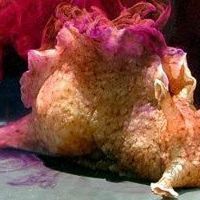synaptic plasticity

Infographic: Synaptic Plasticity in the Sea Slug
Danielle Gerhard, PhD | Sep 8, 2023 | 1 min read
The sea slug has helped scientists in their quest to understand how neurons encode memories.

Infographic: Beyond the Nucleus: mRNA Localization in Neurons
Danielle Gerhard, PhD | Sep 8, 2023 | 1 min read
To support thousands of incoming connections, neurons use sophisticated transportation networks for delivering mRNA to faraway regions.

Captivated by the Great Expanse of Neurons
Danielle Gerhard, PhD | Aug 1, 2023 | 2 min read
According to Erin Schuman, science driven by fascination rather than tools will guide new discoveries.

2023 Brain Prize Awarded for Research on Synaptic Plasticity
Natalia Mesa, PhD | Mar 23, 2023 | 3 min read
The Lundbeck Foundation announces an international cohort of neuroscientists have collectively won the €1.3 million Brain Prize.

Epigenome Editing Decreases Alcohol Seeking and Anxiety in Rats
Natalia Mesa, PhD | May 20, 2022 | 4 min read
A CRISPR-based system that reverses epigenetic changes caused by adolescent binge drinking reduces adult addiction-like behaviors in rats, a study finds, suggesting that an epigenomic approach could someday help treat people with alcohol use disorder.

Giannina Descalzi Studies the Factors Underlying Chronic Pain
Natalia Mesa, PhD | May 16, 2022 | 3 min read
The University of Guelph neuroscientist is scoping out the brain regions and genes that change as a consequence of pain that lasts for months or even years.

Amyloid Precursor Protein Linked to Brain Development Mechanisms
Catherine Offord | Dec 1, 2021 | 2 min read
Researchers provide evidence that the Alzheimer’s-associated protein calibrates a signaling pathway that is conserved across the animal kingdom.

Infographic: Reverse Signaling Between Neurons
Christie Wilcox, PhD | Jun 4, 2021 | 1 min read
So-called mossy fiber synapses in the hippocampus can meter the amount of neurotransmitter they receive by sending glutamate against the usual direction of synaptic flow.

Hippocampal Cell Communication Is Bidirectional: Study
Christie Wilcox, PhD | Jun 4, 2021 | 6 min read
In an unexpected twist in neuroscience dogma, the cells on the receiving end of neurotransmission appear to be able to release glutamate to regulate the transmitting cell’s activity.

Flexible Synapse Strength May Underpin Mammal Brain’s Complexity
Asher Jones | Mar 24, 2021 | 3 min read
Neural connections in the mouse neocortex can release multiple packages of neurotransmitters per electrical impulse, a study finds.

Infographic: A New Model of Synapse Strength
Asher Jones | Mar 24, 2021 | 1 min read
Synapses in the mouse neocortex can release multiple packages of neurotransmitters, suggesting that connection strength is more flexible than previously thought.

The World Within
Bob Grant | Feb 1, 2019 | 3 min read
Internalizing the environment might be the next step in humans’ relationship with our planet.

“Minibrains” May Soon Include Neanderthal DNA
Ashley Yeager | May 14, 2018 | 1 min read
Brain organoids engineered to carry the genetic material could reveal how our brains are similar to and different from those of our closest relatives.

RNA Moves a Memory From One Snail to Another
Ashley Yeager | May 14, 2018 | 4 min read
Injecting molecules from a sea slug that received tail shocks into one that didn’t made the recipient animal behave more cautiously.

Learning Enhances Synapses Between “Memory Cells” in Mice
Diana Kwon | Apr 26, 2018 | 3 min read
A new technique reveals certain neuronal connections grow larger and denser when memories are made.

Image of the Day: Fountain of Youth
The Scientist | Aug 14, 2017 | 1 min read
Neural plasticity wanes with age, but increasing the protein Arc—abundant earlier in life—in the visual cortex of mice can fend off this decline.

A Potential Remedy for the Aging Brain
Aggie Mika | Aug 8, 2017 | 3 min read
In mice, injected fragments of a naturally occurring protein boost memory in young and old animals and improve cognition and mobility in a model of neurodegenerative disease.

Memories Erased from Snail Neurons
Diana Kwon | Jun 28, 2017 | 2 min read
Scientists block particular enzymes to remove the cellular signatures associated with specific memory types.

Profile: Dean Buonomano Studies How the Brain Encodes Time
Anna Azvolinsky | Sep 1, 2016 | 8 min read
The UCLA neurobiologist uses computational modeling, in vitro electrophysiology, and human psychophysics experiments to explore how neurons and the brain as a whole perceive and respond to time.
